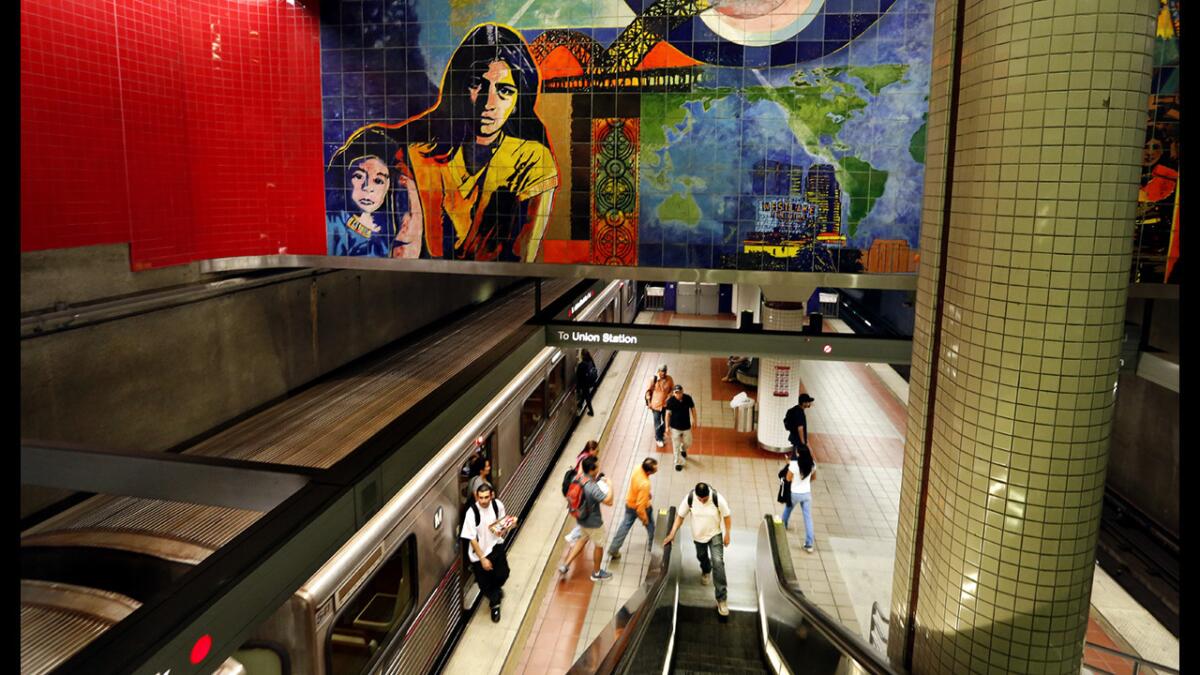Readers React: Judging rail stations

- Share via
To the editor: The only meaningful assessment of rail transit stations is the time it takes to get from where one is at to where one needs to be. (“Passing grade for Metro,” Oct. 6) Most people in the L.A. metropolitan area do not live within walking distance of a Metro Rail station and must drive or take a bus to reach one. By this measure, stations such as the bottom-ranked Wardlow one in Long Beach would be near the top of the list due to the easy access from both the 405 and 710 freeways and the amount of time needed to reach to the platform.
The highest priority in the design of rail transit stations should be to provide the fastest way to get people within the adjacent community onto the trains. In suburban areas more parking is needed. In more densely populated areas, stations need to be where pedestrian activity is highest. Grading stations based on one criteria is unproductive.
Alan Coles, Long Beach
..
To the editor: As a recently retired user of Wardlow Station on the Blue Line for more than four years, I can readily answer the questions of what is wrong with that particular facility for MTA.
Summary: lack of parking, lack of handicap parking, permit spaces with no method to obtain a permit, dirty platform, lack of security and limited alternatives to driving to the station. The F grade is completely deserved.
Gene Whitaker, Long Beach
..
To the editor: The parking lots for rail stations are normally full. This implies there is greater demand than supply.
The main problem is that many politicians have a conflict of interest when they take campaign contributions from tire, oil, auto, bus, truck and taxi lobbyists.
Jon Hartmann, Los Angeles
..
To the editor: Despite all the metrics used by the Center for Law, Energy and Environment at UC Berkeley in the evaluation of Metro Stations by using walkability, mixed land uses, parking, bicycle accessibility and so forth, the evaluators failed to use the most important metric — the experiences of the transit rider at the Metro stations.
If the evaluation had taken into account the riders’ experience while waiting for the train, every Green and Gold Line station situated in the middle of freeways would receive the lowest possible grade, regardless of the surrounding community.
At those freeway median stations, transit riders are subjected to deafening noises, spewing exhaust and flying particulate matter from the vehicles on the freeways, either speeding by or stuck in gridlock. It is inhumane to force people to be stranded on a desert island train station in the middle of the freeway.
Matthew Hetz, Los Angeles
..
To the editor: It was great reading your article and I was delighted to see a photo of muralist Francisco Letelier’s “La Luna” inside the paper.
However, it was disappointing to find no mention of the artist or the name of this mural at Westlake/MacArthur Park Station, which as you very well wrote is a “model for transportation agencies.” As an art historian and as the executive director of the Mural Conservancy of Los Angeles, we want to be sure our muralists are acknowledged.
Murals add immensely to public space; they inspire and educate us. Letelier’s work here was inspired by the nearby communities, which are a meeting of worlds and cultures.
Isabel Rojas-Williams, Los Angeles
Follow the Opinion section on Twitter @latimesopinion and Facebook
More to Read
A cure for the common opinion
Get thought-provoking perspectives with our weekly newsletter.
You may occasionally receive promotional content from the Los Angeles Times.









